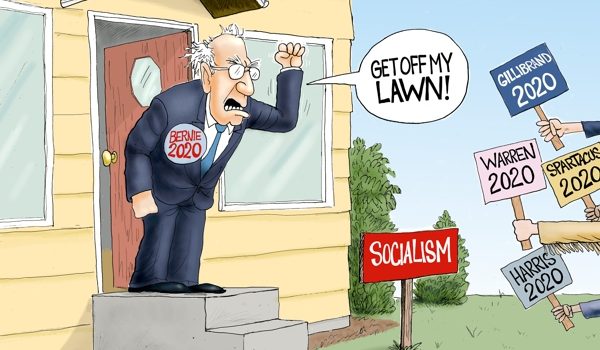
Restrictions on opioid prescriptions fuel a black market while leaving people in agonizing pain. In the New York Times, Maia Szalavitz says attempting to reduce overdose risk by depriving patients of painkillers raises the odds of suicide and is both cruel and senseless. Doctors are cutting back on pain medication, leaving patients to suffer unnecessarily:
Katie Tulley suffers from an incurable bladder disorder so painful that it feels “like tearing skin off your arm and pouring acid on it, 24/7,” she said… Ms. Tulley, a 37-year-old Louisianan who used to work with autistic children, manages her pain with a fentanyl patch. The opioid gives her a few precious hours out of bed to help her parents, do online volunteer work and occasionally leave home…Now, because of legal concerns about overdose risk, her doctors have considered stopping her medication, even though she has never misused it. And so, when she recently discovered a suspicious lump in her belly, she found herself hoping it was cancer…“At this point it’s the only way to be treated” for her pain.
As many as 18 million patients rely on opioids to treat long-term pain that is intractable but not necessarily associated with terminal illness. In 2016, seeking to curb opioid misuse, the Centers for Disease Control and Prevention introduced guidelines outlining a maximum safe dosage and strongly urging doctors to avoid prescribing for chronic pain unless death is imminent. The guidelines were supposed to be voluntary and apply only to chronic pain patients seeing general practitioners. Instead, they have been widely seen by doctors as mandatory.
As a result, thousands of pain medication recipients have had their doses reduced or eliminated. But this attempt to save people from addiction is leaving many patients in perpetual pain — and thus inadvertently ruining, or even ending, lives.
A Veterans Health Administration study found alarming rates of suicidal acts “following discontinuation of opioid therapy.”
The government’s attempt to curtail opioid prescriptions is based on a fallacy: that today’s non-medical opioid users began using opioids as patients. That’s untrue of most non-medical users: As the Journal of Pain Research points out, the government’s campaign is based on a false premise: “Today’s non-medical opioid users are not yesterday’s patients.” Medical users usually do not become addicts.
Writing in the Orange County Register, Dr. Jeffrey Singer notes that attacking doctors for prescribing opioids to patients for essential pain relief does nothing to prevent black-market use of opioids or deaths among non-medical users:
Will this presidential election be the most important in American history?
A recent report reveals California’s “Death Certificate Project,” is terrorizing doctors into under-prescribing or even abruptly terminating medication for acute and chronic pain patients. The project investigates doctors who have treated patients identified as overdoses on death certificates and considers rescinding their licenses or charging them with homicide.
It is scandalous that we doctors and our patients are the latest victims of America’s war on drugs, while deaths from nonmedical use of licit and illicit drugs continue their exponential and perpetual climb — with no end in sight.
The U.S Centers for Disease Control and Prevention recently released the latest results of the current strategy: opioid-related overdose deaths in 2017 continued their steady climb, increasing 13 percent over 2016 totals. This happened despite the fact that per capita high-dose opioid prescriptions fell 58 percent from 2008 to 2017, while the number of all opioids dispensed fell 29 percent from 2010 to 2017.
Similarly, a recent Cato Institute study by Harvard’s Jeffrey Miron and others shows the government’s anti-opioid crusade has backfired and increased opioid addiction and overdose deaths:
Opioid overdose deaths have risen dramatically in the United States over the past two decades.…The opioid epidemic has resulted from too many restrictions on prescribing, not too few. Rather than decreasing opioid overdose deaths, restrictions push users from prescription opioids toward diverted or illicit opioids, which increase the risk of overdose because consumers cannot easily assess drug potency or quality in underground markets. The implication of this “more restrictions, more deaths” explanation is that the United States should scale back restrictions on opioid prescribing, perhaps to the point of legalization.




